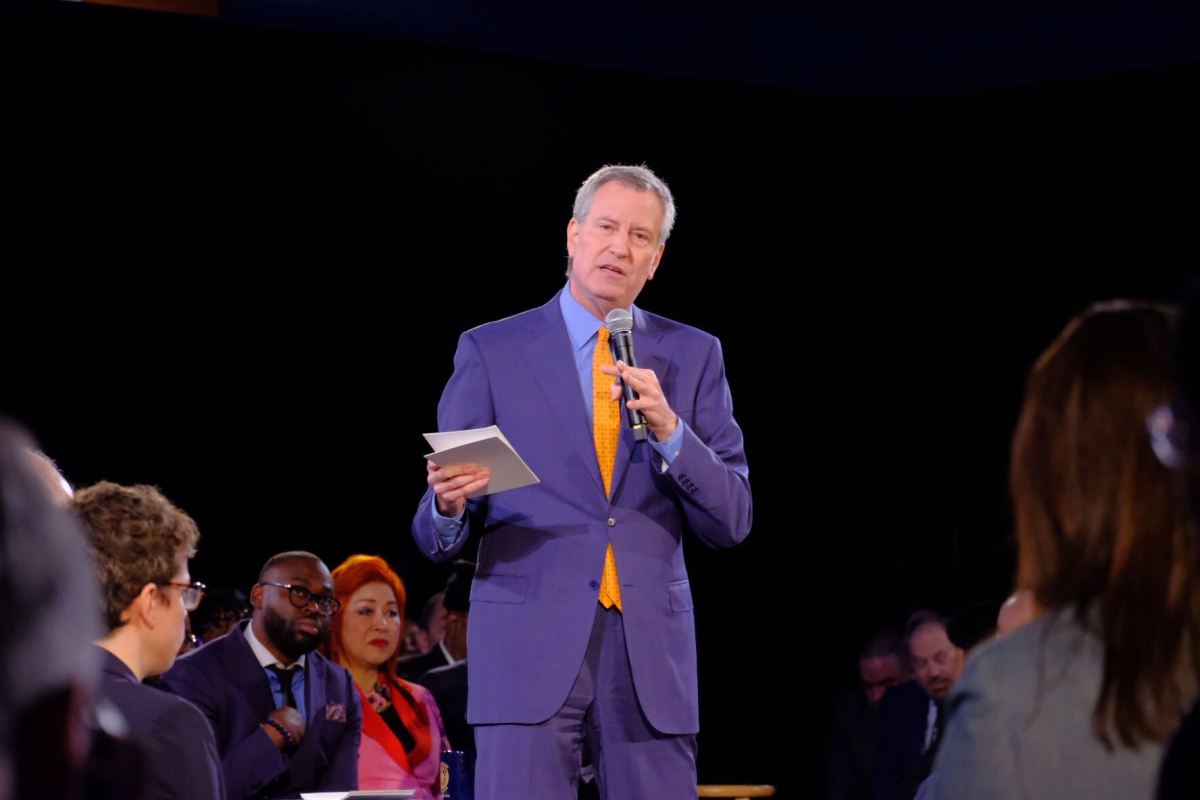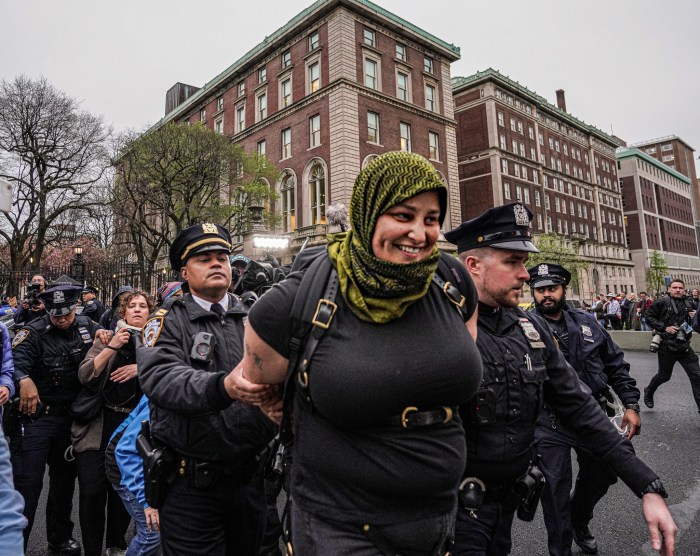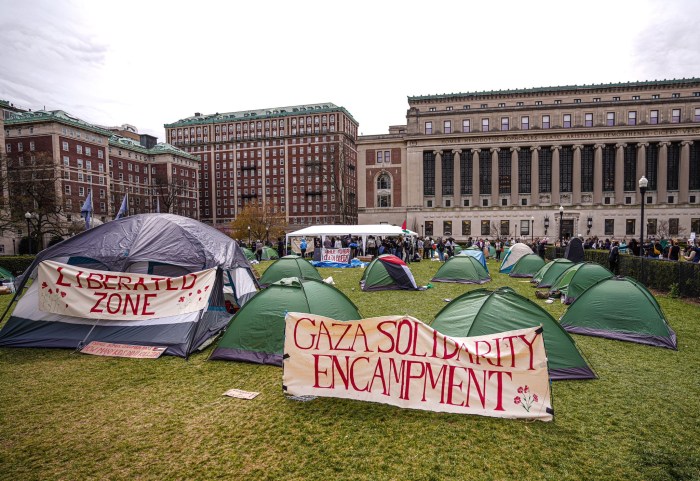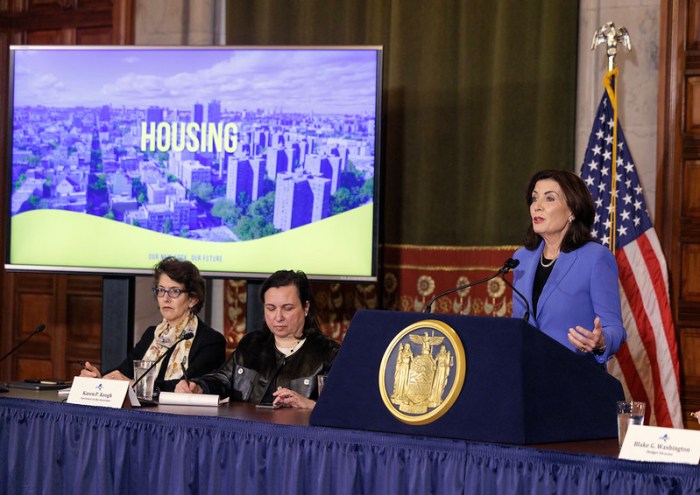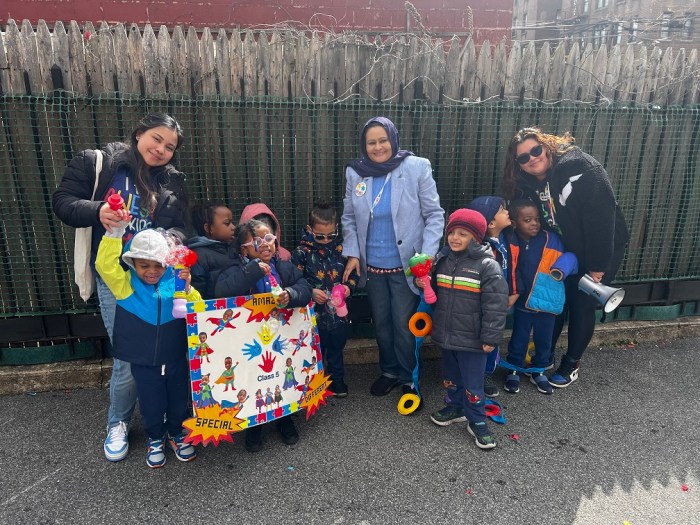Mayor Bill de Blasio’s State of the City address on Thursday touted his speech as a much needed “real talk” while calling for reform on issues every New Yorker knows all too well.
Inside the Museum of Natural History, de Blasio said he would implement programs that will bring commercial rent relief to struggling small businesses, the affordability crisis, enforcement of Vision Zero reforms as well as climate change.
De Blasio looked previously bad decades in the city when New Yorkers fled because of rising crime and economics. Today, the mayor resolved that his administration would seek to address “economic fears” felt across the boroughs.
“The challenge now is not crime, the challenge now is greed,” de Blasio said of housing and commercial space. “It’s not that we have to fear street thugs it’s that we have to fear bad landlords.”
Here’s a rundown of de Blasio’s biggest points.
Saving small business
With up to 28,000 small businesses in the five boroughs, the mayor intends invest up to $500 million in pension funds in local commerce as well as cutting fines by 50 percent. Mom-and-pop shops will also have increased access to free legal services and, with help from the city government, navigate options for low-interest loans.
De Blasio said he would seek recommendations this year from a panel focused on commercial rent control — an idea that has been fielded in City Council in past under the moniker of the Small Business Survival Act, but did not get the support of lawmakers to pass.
Affordable housing
The mayor plans to take the first steps toward legalizing basement apartments — a controversial move, given the usual fire hazards inherent in most basements that lack proper egress.
The administration hopes to update zoning laws to allow homeowners to rent subterranean space. They also plan to set aside an unknown amount of capital funds for low-interest loans so New Yorkers can pay for renovations to make their basements safe for renters.
Street safety measures
De Blasio announced the city will take additional steps to calm vehicular traffic and make streets surrounding schools safer.
The city’s Department of Transportation is in the process of installing 1,000 new lights, stop signs and speed bumps around schools and neighbors.
And after a particularly bloody 2019 for cyclists – 29 deaths total – the de Blasio administration will be reinforcing street safety redesigns with the creation of special Vision Zero Unit in NYPD that will consist of 100 officers.
These cops will focus on speeding drivers, red light enforcement and failure to yield to pedestrians.
Climate
Almost a year after he announced a Green New Deal for New York City that cracked down high exhaust buildings and planned to source electricity from “sustainable,” hydroelectric power from Canada. The administration says an agreement will be secured to fully power the city with hydroelectric power by 2025.
Through two executive orders, de Blasio intends to restrict the sale – on city property only – of single-use plastic bottles under 21 ounces by 2021; and to require all city vehicles to be zero emission by 2040. How the latter order will hold up after de Blasio’s tenure ends next year was not explained.
Also on the agenda for the next year, the city will expand hours of operation for 51 new community centers with free membership, reopen six such facilities operated by NYCHA and open seven new Parks Department centers in the five boroughs.



